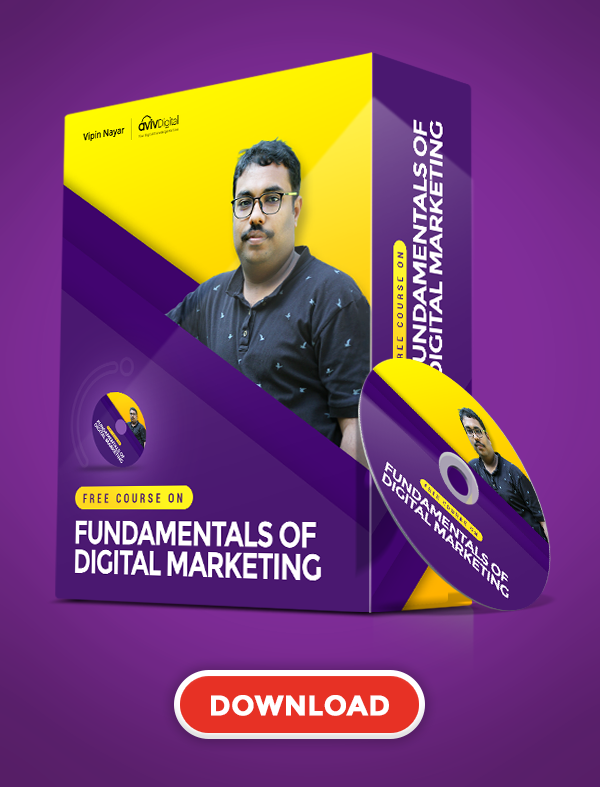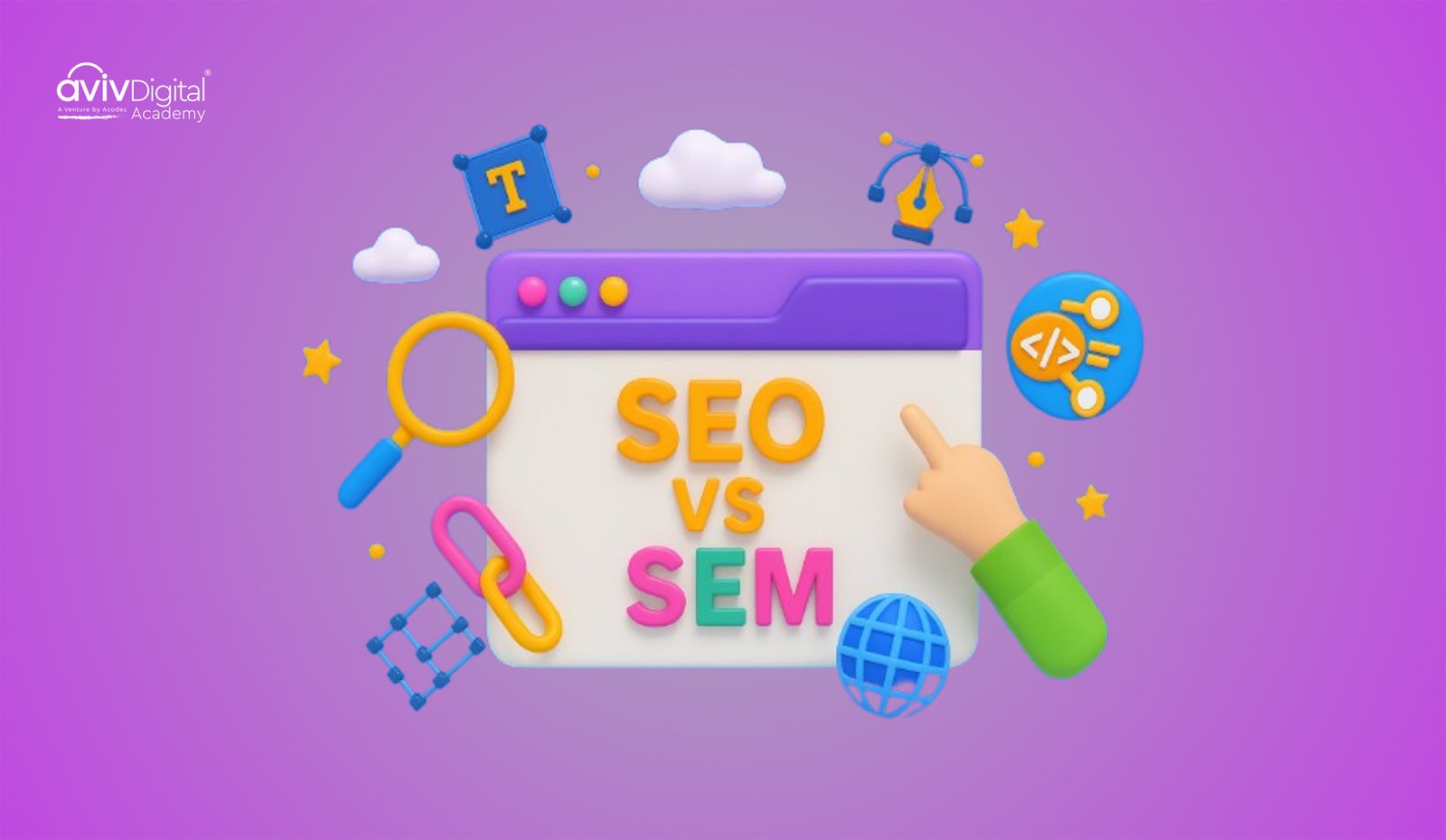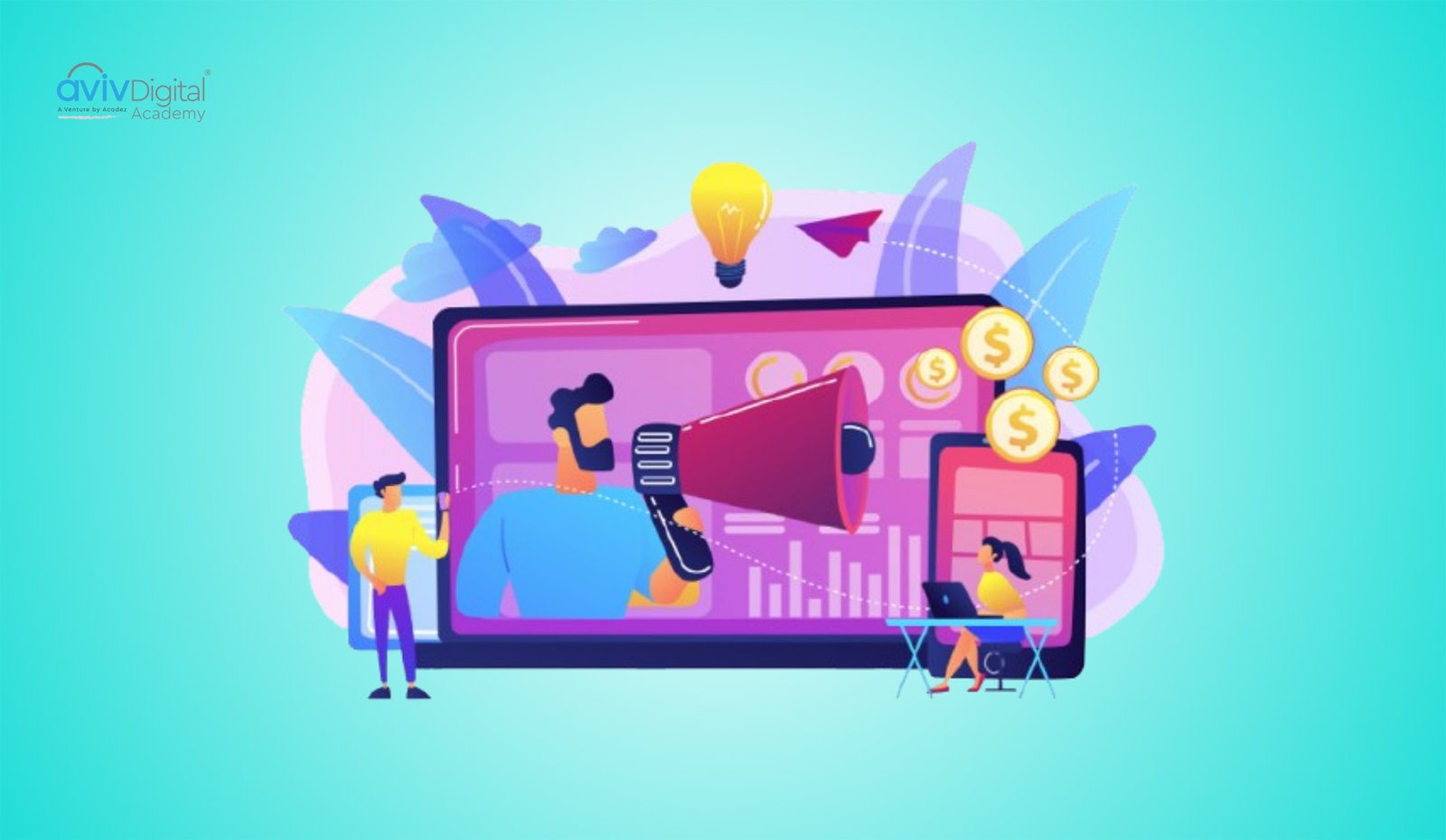
Few years ago, businesses spent thousands on newspaper ads hoping the right people would see them. Today, a small shop in Calicut can show its products to interested customers worldwide for a fraction of that cost. That’s the shift digital marketing has brought. If you notice carefully, you’ll realize it’s part of every online experience we have. From mindlessly scrolling through Instagram to actively searching on Amazon, every ad you see is strategically placed before you. From a local cafe to multinational companies, every business makes use of this most effective way of marketing. But it’s not perfect. Digital marketing also has its own pros and cons. In this blog, we’ll explore the advantages and disadvantages of digital marketing. And it will help you understand why digital marketing is the backbone of modern marketing.
What is Digital Marketing?
Digital marketing refers to all kinds of marketing activities done through the internet and electronic devices. Businesses use online platforms to build brand image, reach out to their audiences, and sell products. Unlike traditional marketing, which uses billboards and newspapers, digital marketing uses these channels to reach potential customers. And with the global digital advertising market projected to reach $786.2 billion by 2026, it’s clear that brands worldwide are shifting their focus online more than ever.
- Social Media Marketing is about sharing engaging posts and ads on Instagram, Facebook, LinkedIn, and more
- Search engine optimization (SEO) can improve the rank of a website on search results, for users to find it faster
- Content Marketing creates blogs, infographics, and videos that educate or entertain
- Email Marketing is sending personalized updates and offers to the customer’s inbox
- PPC Advertising places paid ads in front of people who are already looking for related products or services.
- Influencer Marketing uses the trust people already have in their favorite creators to introduce something new.
The true strength of digital marketing is how it connects with the right people, not just more people. A business can reach audiences across different countries while still focusing on those who are actually interested based on what they like, how they shop, or even where they live. And if you want to learn how this works in real campaigns, joining the best digital marketing course in Calicut is a great way to start building practical skills and confidence in the field.
Features of Digital Marketing
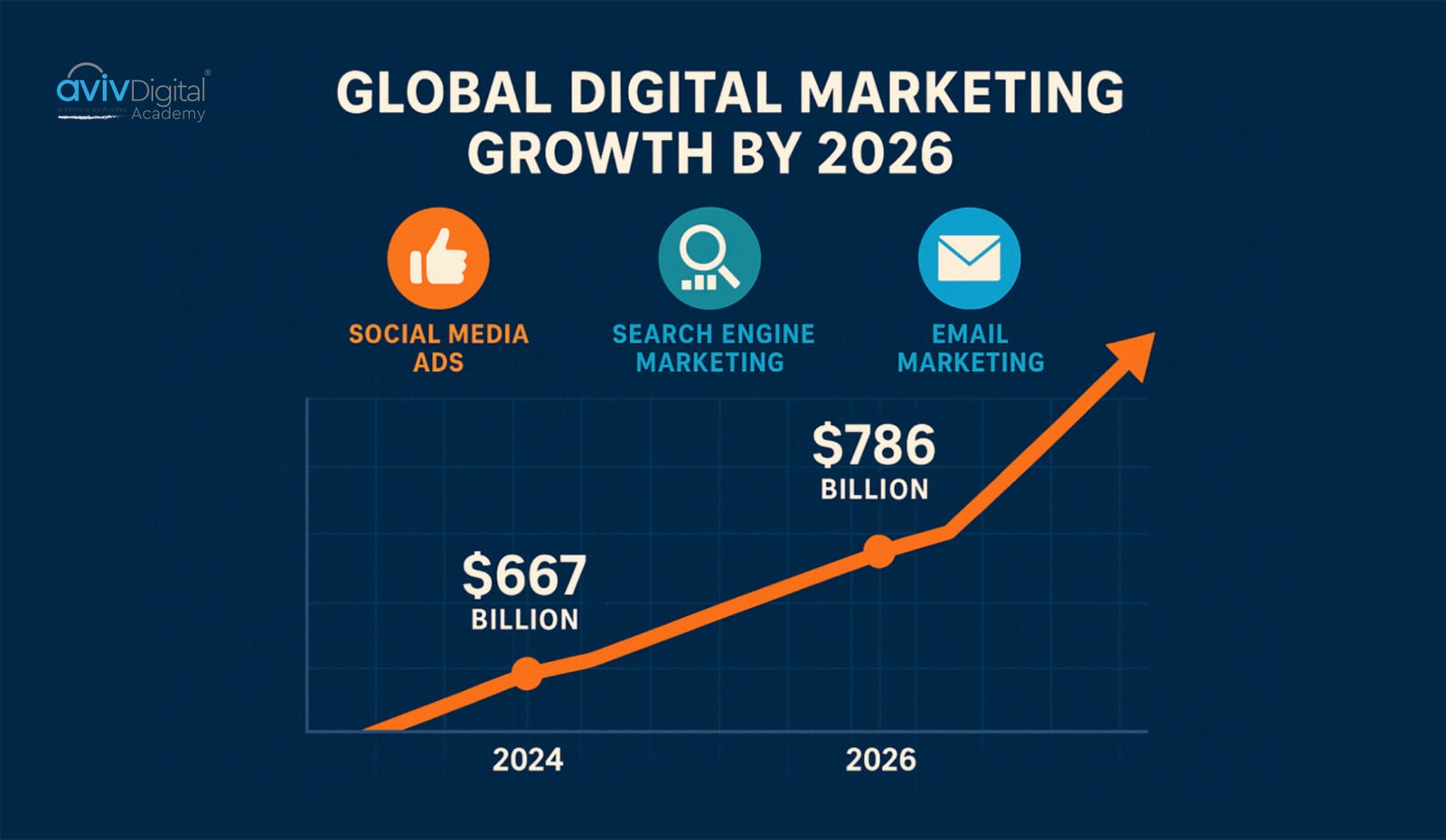
Before we get into the advantages and disadvantages of digital marketing, let’s look at what separates it from traditional marketing. Global reach is probably the biggest game-changer here. A business in India can sell to someone in California without even thinking twice about borders or shipping complexities. Targeted advertising means you’re not just spending money on random audiences hoping something works. You can get very specific about who sees your ads based on age, location, interests, and even online behavior patterns. And measurable results are one of the main features. Real-time data shows you clicks, conversions, bounce rates, and a dozen other metrics that tell you exactly what’s happening. Personalization has become easier with digital channels, with recommendations based on online activities. Retargeting is an incredibly effective feature where ads follow potential customers around after they visit your website, gently nudging them to complete that abandoned purchase.
And with the digital advertising market expected to reach $786.2 billion globally by 2026, it is clear that businesses see digital marketing as the future.
Advantages of Digital Marketing
There are plenty of reasons why businesses are shifting a lion’s share of their marketing budget towards digital channels. Let’s explore the advantages of digital marketing.
- Cost-effective: Digital marketing is significantly cheaper than doing newspaper or television ads. Even small businesses can advertise online with a minimal budget. This allows brands to try different strategies and invest carefully. Even free methods like posting on social media or optimizing the website for search engines will bring new customers. In fact, SEO marketing has an average ROI of 22:1 a massive 2,200% return, making it one of the most cost-efficient long-term strategies for businesses of all sizes.
- Higher ROI (Return on Investment): Money spent on digital marketing tends to generate better returns because you can see exactly which campaigns bring in sales and which ones waste budget. A campaign not performing well gets stopped immediately, with that money redirected to better options. This leads to better returns over time. Because money is being spent on quality leads.
- Better engagement: Digital platforms let brands have two-way communication with their customers through direct messages, comments, polls, etc. With an estimated 5.42 billion social media users worldwide in 2025, brands now have more opportunities than ever to interact directly with their audience. Someone asking a question in your Instagram comments and getting an immediate answer will build trust faster than any ad could. Engagement doesn’t guarantee sales, but when potential customers feel valued, it leads to a stronger relationship with them.
- Data-driven approach: Every interaction online generates information you can use to improve your marketing. And analytics tools can help in understanding the customer’s behavior. It can be used to personalize their experience, which leads to more conversions. Instead of making choices based on hunches, you work with concrete evidence showing what your actual customers do and want.
- Flexible Campaigns: If a campaign is not performing well, changes can be made easily. The budget, creative, or even audience settings can be updated. You can increase spending on successful campaigns and cut losing ones without waiting. This saves time and money
With these advantages of digital marketing, many brands have improved their visibility and reached their target audience, and converted them into happy customers.
Disadvantages of Digital Marketing
Digital marketing is not perfect. But understanding these challenges is necessary for creating successful strategies. Let’s have a look at the disadvantages of digital marketing.
- High competition: When everyone can afford to market online, everyone does. Your target audience will be seeing the ads of your competitors as well. Big companies with a big budget and a large team will have leverage here. Standing out and grabbing their attention is the real challenge. Creating content that can break through this noise is the only way to connect with your customers.
- Privacy concerns: Let’s be real, customers are getting increasingly uncomfortable with how businesses are tracking every click they make online. And the violation of the laws for the protection of privacy, such as, DPDP Act 2023, will result in hefty fines and loss of trust and image. Balancing the use of data and respecting your customers’ privacy is the key here.
- Public criticism: One angry customer can ruin your reputation faster than you built it. Negative reviews, complaint posts, and disappointed comments are all visible to thousands of potential customers. Since most people tend to believe the customer experience over your promises on ads, this has a negative impact more than you imagine. Having a good CRM (customer relationship management) is essential to handle this.
- Skill requirement: Digital marketing looks easy until you start competing with the professionals. And, you can’t do it all. You need to understand content creation, copywriting, basic design, video editing, analytics interpretation, SEO rules, social media algorithms, advertising platforms, email automation, and more. Even with trained skills, you have to keep studying to keep up with the constantly changing platforms. And with 59% of marketers planning to partner with more influencers in 2025 compared to 2024, the demand for cross-disciplinary skills is rising even higher, making adaptability and continuous learning essential.
- Constant changes: Change is inevitable. Especially when it comes to digital platforms. A new feature of a platform you constantly use could’ve been introduced while you were reading this blog. And a completely different platform might take over in the near future. Keeping up with these changes is necessary to stay relevant.
These challenges don’t make digital marketing any less effective. They highlight the need for planning, adaptability, and consistent effort. Understanding the disadvantages of digital marketing allows marketers to prepare well.
Traditional Marketing v/s Digital Marketing
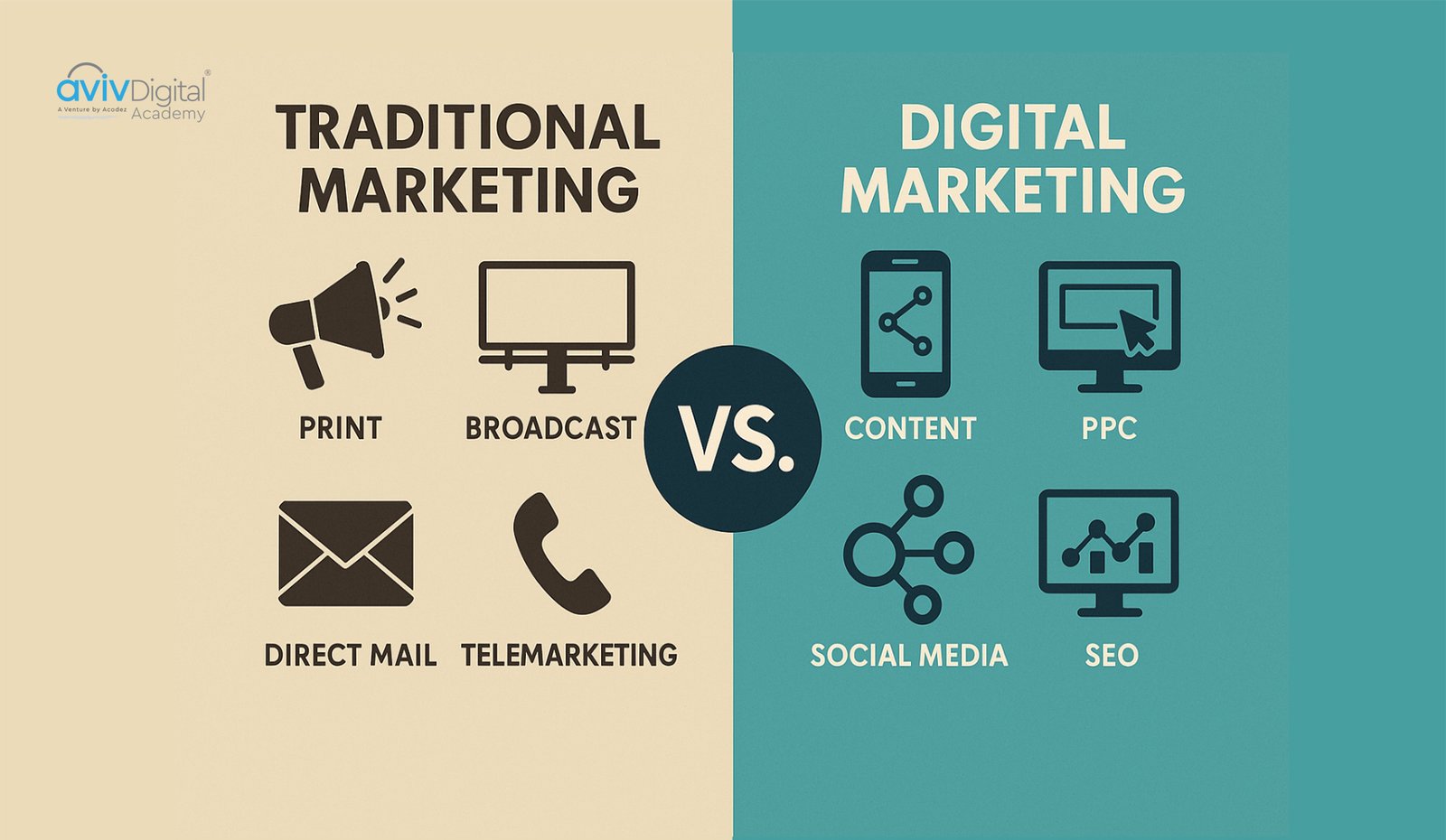
To understand why digital marketing has an upper hand over traditional marketing, we need to understand the key differences between them. And it will help you in creating effective strategies. Let’s compare some major features of both.
| Features | Traditional Marketing | Digital Marketing |
| Medium | Uses online platforms like websites, social media, search engines, etc. | Easy to edit, pause, or update instantly |
| Reach | Limited to certain locations or regions | Global reach with promoting content from anywhere |
| Cost | Usually higher due to printing and distribution costs. | Cost effective |
| Targeting | Broad targeting, difficult to narrow down | Precise targeting based on demographics, interests, and behavior |
| Interaction | Only one-way communication is possible | Two-way communication through messages, comments, and feedback |
| Measurement | Results are hard to track and measure | Analytics tools available to measure performance |
| Flexibility | Social media posts, Google ads, and Email marketing | Takes time and is more expensive to make changes |
| Examples | Newspaper ads, TV commercials, Billboards, Flyers | Precise targeting based on demographics, interests and behavior |
Traditional marketing continues to play an important role, especially for building local trust and visibility. However, digital marketing has expanded the possibilities far beyond what traditional channels can offer. With its ability to reach global audiences, measure results instantly, and adapt to change quickly, it has become the smarter choice for most modern businesses looking to grow efficiently.
Conclusion
Digital marketing has moved from being optional to essential for brands that want to stay in business. The advantages are quite tempting for any marketer. Reaching an audience around the world at a low cost, targeting the right audience with strategic content, analysing the effect of each and every ad prepared, and so on. But the disadvantages also need to be considered while creating strategies and spending money on them. The tight competition and public criticism need to be handled carefully.
But understanding the advantages and disadvantages of digital marketing will unlock its true potential. It will help you.
Aviv Digital Academy is one of the leading Digital Marketing Course in Calicut. We offer a wide variety of globally recognized certification programs that include SEO, SEM, SMM, Email Marketing, and Inbound Marketing courses. For more details, contact us at: +91 8156998844
Frequently Asked Questions
Why is digital marketing important today?
People spend most of their time online now. Watching videos, scrolling social media, and looking up products. Digital marketing lets businesses meet them where they already are. It boosts visibility and provides actual data showing what’s working and what isn’t.
When can you expect results from a digital marketing strategy?
Depends on what you’re doing. Paid ads can get you quick traffic within days. SEO and content marketing? Those take longer, usually a few months of consistent work before you see real traction. But regular tracking helps you adjust and speed things up.
Will traditional marketing become irrelevant because of digital marketing?
Not really. Traditional marketing still has its place, especially for local businesses and building brand trust. Digital marketing just adds more options with better targeting and tracking. Most smart brands use both now instead of choosing one over the other.



